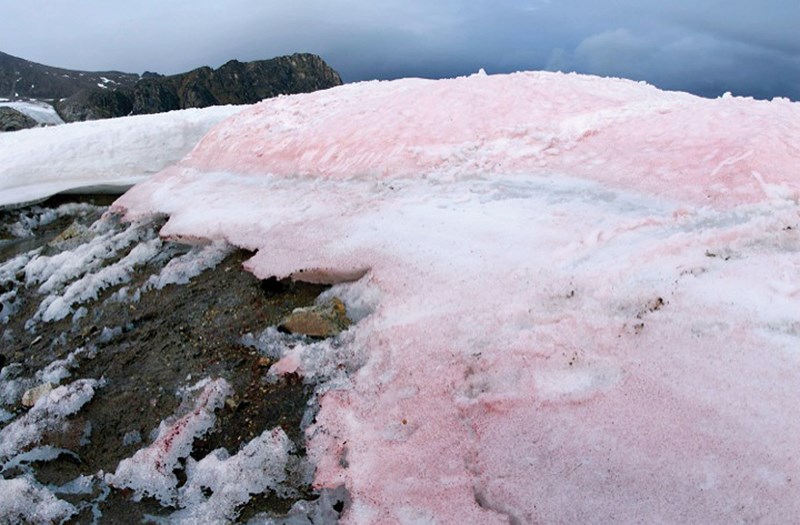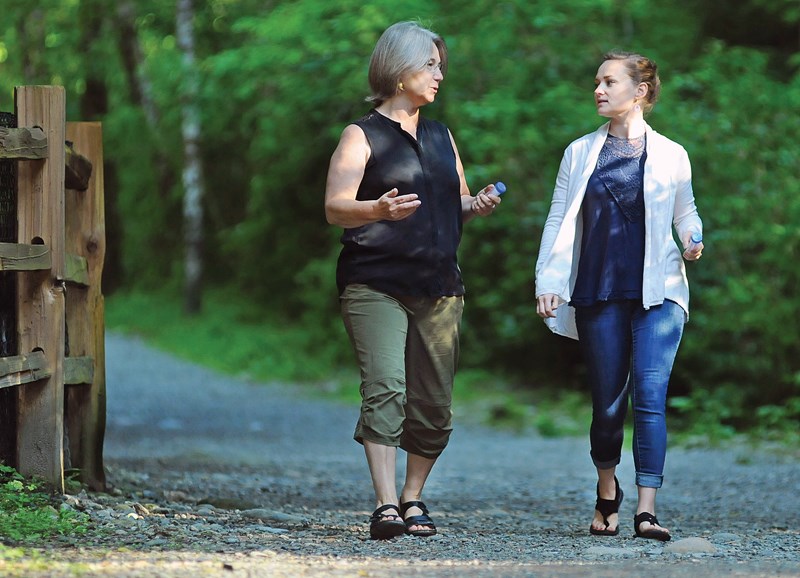Frank Zappa famously advised us all not to eat that yellow snow. It turns out there are instructions that come with pink snow as well.
A North Shore microbiologist is hoping some backcountry adventurers will help in a study aimed at better understanding the role pink algae play in climate change.
Lynne Quarmby, a Simon Fraser University professor and former Green Party candidate for Burnaby North-Seymour, is asking hikers to document patches of pink snow in the alpine so she can study the algae causing the change in colour.
A study published by the German Research Centre for Geosciences last week caused a tizzy among scientists for being the first to confirm that the presence of pink algae in Arctic snow and glaciers decreases snow’s albedo by 13 per cent.
“What that means is 13 per cent more heat will be absorbed instead of being reflected back away from earth,” Quarmby said. “The more it melts, the more the algae grow, the more they absorb the heat. …They’re part of a positive feedback loop for climate change.”
It’s particularly relevant in the Arctic where temperatures are rising fastest but because of its isolation and harsh conditions, it’s difficult to study the algae’s behaviour continuously. The same species of algae is known to grow in the North Shore Mountains, which scientists could easily reach if they know the right places to look.
Quarmby hopes anyone who spots pink snow will send her an email with a note about the location, a photo and, if possible, GPS co-ordinates so she and other researches can study the algae cultures in more detail, right down to sequencing their DNA, next winter and spring.

“We can go out every week for two months and watch the seasonal progression so we can really understand the biology,” she said. “One of the mysteries is where this stuff comes from. It appears on top of the snow. That snow fell from the sky and was white all winter so where does this stuff come from? One of the ideas is that it swims up through the soil. It swims up the melting snow onto the surface.”
The study can then serve as a “beta test” for more research in the Arctic, Quarmby said.
And time is precious for this kind of research as climate change itself threatens to reshape the North Shore ecosystem, Quarmby said.
“It’s probably the most rapidly changing ecosystem on the planet during climate change. These alpine snowfields may be going extinct and we don’t even know how they work yet,” she said.
The study is firmly in the realm of pure science – base knowledge with no immediate application – but that doesn’t mean it couldn’t prove to be very important, Quarmby said. Her studies into green algae once led to a serendipitous discovery related to human health.
“I was just studying it because I was really curious how it moved and I discovered a gene that helped us figure out polycystic kidney disease but I never could have predicted that. I never could have dreamed I was studying polycystic kidney disease,” she said. “You never know what you’re going to discover. To me, one of the most important things we need to be doing is staying curious about our world.”
Anyone who spots pink, green or dirty looking snow in the mountains should email [email protected]. Hikers can also request sample collection kits to retrieve the algae themselves.



